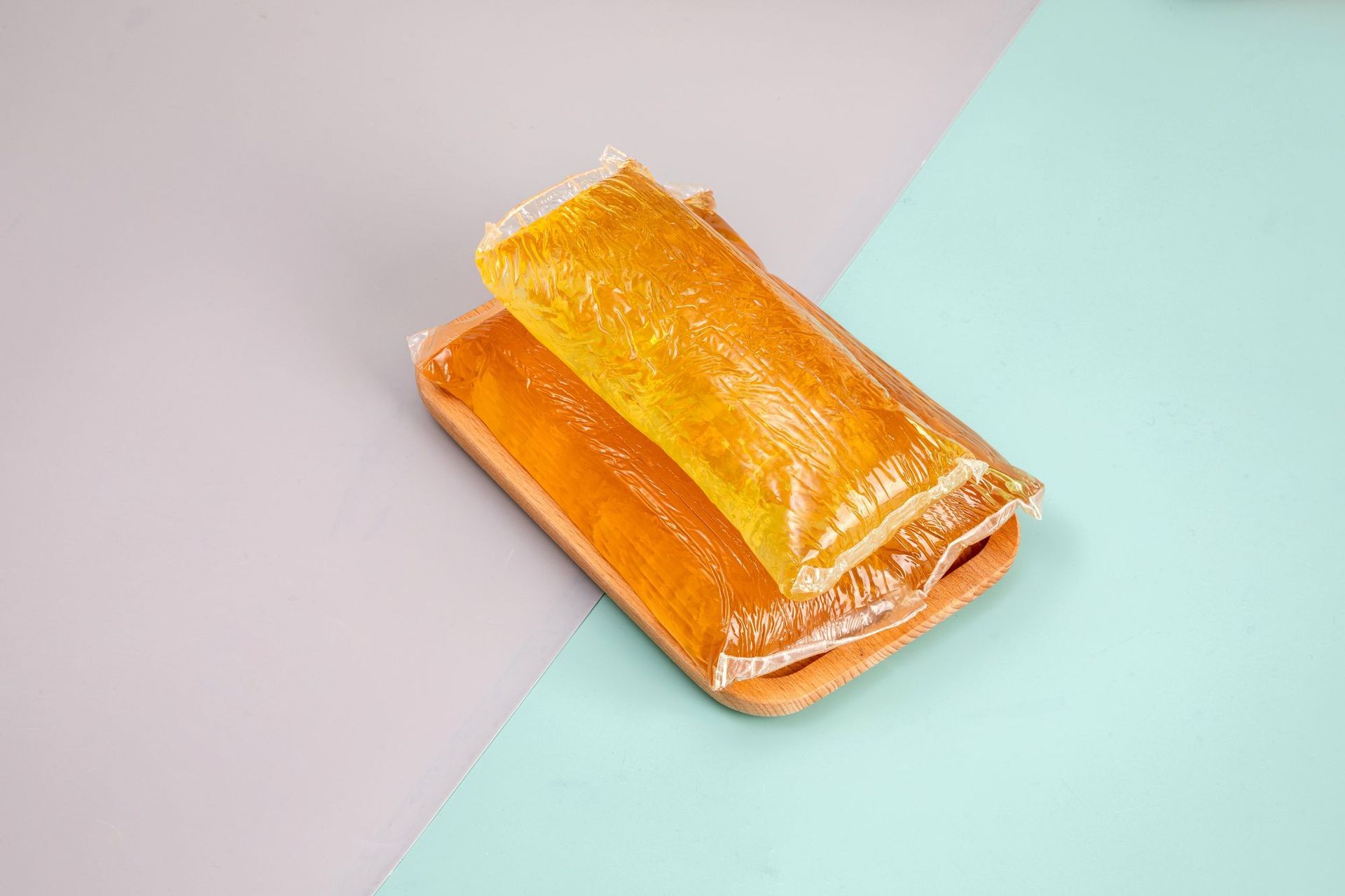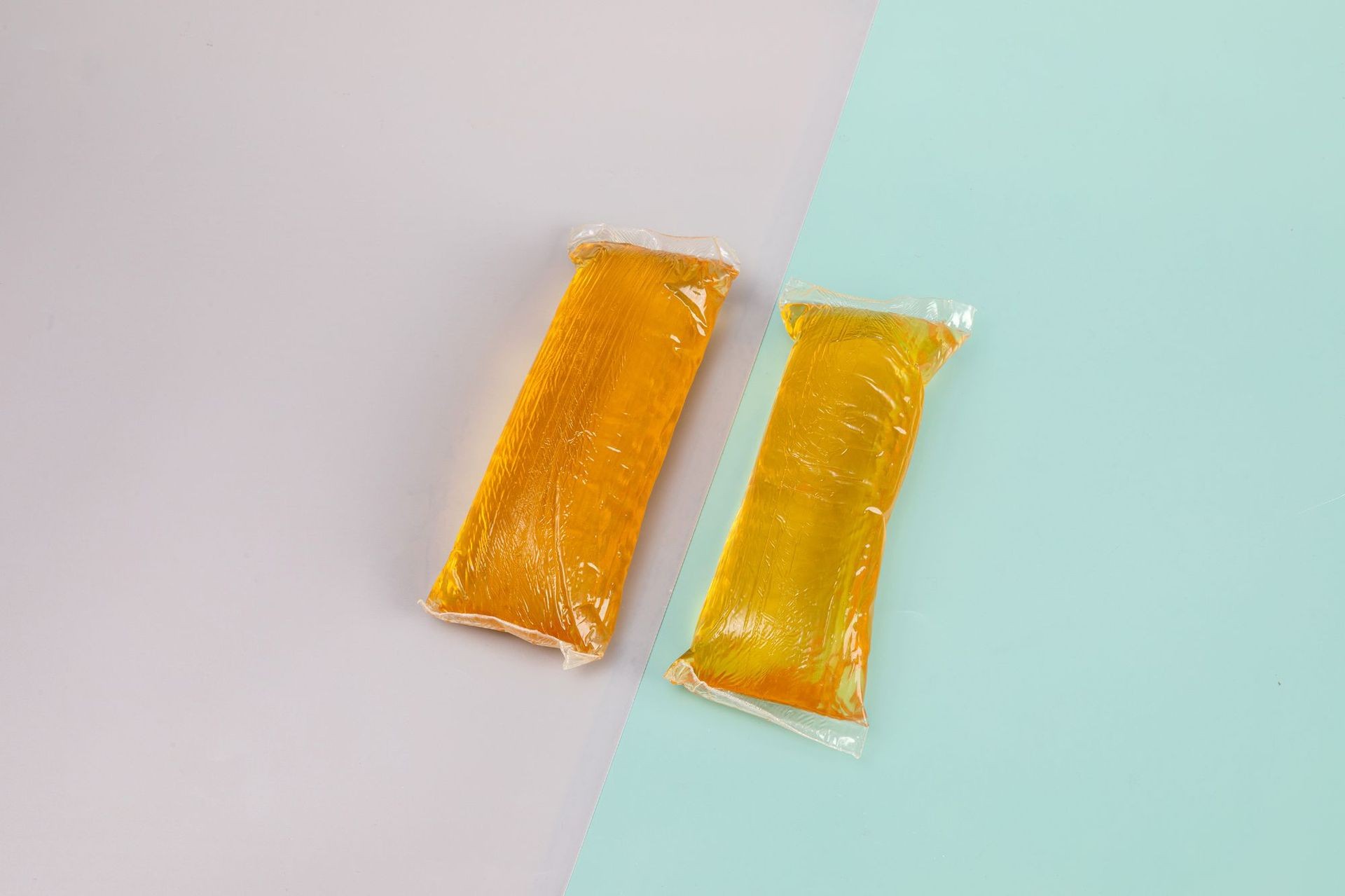From the perspective of industrial application, this paper studies the reasons for the serious loss of adhesion of hot melt pressure sensitive adhesive used in women's hygiene products, hoping to find countermeasures to solve the problem, and provide a theoretical basis for the correct selection of hot melt glue used in hygiene products.
(1) Coating amount and peeling force
The adhesion performance of hot melt pressure sensitive adhesive is based on the adhesion elasticity of its polymer chain: it should have a certain viscosity to achieve good wettability to the substrate when in use; At the same time, it must also have a certain elasticity to produce appropriate peel strength.
Factors such as sizing process, formula and the characteristics of breathable bottom film will lead to its viscosity loss. By comparing the viscosity loss sample with the normal sample, it can be obtained that the glue amount of the viscosity loss sample and the normal sample is not different, and the scraping is relatively uniform, indicating that the viscosity loss sample can eliminate the influence of the sizing process. At room temperature, the adhesion performance of the debonding sample is poor, but under the pressure of 40 ℃ and 1.2kg, the simulated stripping force is close to the normal sample.
(2) Color difference analysis of PE backing film
Through experiments, it can be concluded that the change rate of color difference between the lost viscosity sample and the normal sample is very different after sizing. Therefore, it can be seen that the breathable bottom film has a great influence on its viscosity loss, that is, the viscosity loss phenomenon is caused by its joint action with the breathable bottom film.

(1) Influence of filler free substrate
In order to further verify the influence of fillers in the bottom film of sanitary products on its performance, it is evenly coated on the PET film without fillers and oil absorption. Its performance is measured by testing the initial peeling force of the sample, simulated peeling force, peeling force after aging, initial ring adhesion at low temperature and normal temperature. The test results are as follows:
Dmc-5255 and hm-d have better adhesion than fuller1803; Fuller1803 also has a good peeling force on pet bottom film. After 14 days of aging, the peeling force decreases by less than 10%, which can meet the use requirements; There is little difference in the initial adhesion of different hot melt pressure sensitive adhesive, indicating that the three have good pressure sensitivity.
To sum up, if several different hot melt glues are applied to the non oil absorbing pet backing film, the bonding performance of fuller1803 is not different from that of dmc-5255 and hm-d; Fuller1803/ cotton peel force decreases by less than 10% before and after aging, which is not easy to cause viscosity loss. Therefore, its viscosity loss is caused by the joint action of it and breathable bottom membrane.
(2) Influence of filler containing substrate
Melting temperature of breathable bottom film before and after sizing
The crystallization melting endothermic peak of unglued PE breathable bottom film appears at about 120 ℃, while after sizing, the crystallization melting endothermic peak of breathable bottom film moves to a lower temperature.
Effect of substrate on its aging resistance and bonding properties
Apply different hot melt pressure sensitive adhesive to the surface of the casting bottom film and the breathable bottom film respectively. Through the test, it is concluded that the casting bottom film substrate has little effect on its aging resistance and adhesion. The breathable bottom film has a great influence on its aging resistance and adhesion. Its initial peel force decreases with the extension of aging time. When the aging time increases to 72 h, its adhesion to the breathable bottom film tends to be stable; However, after fuller1803 aging, its initial peel force is less than 0.2n/cm (lower than the lower limit of the use requirements), so the corresponding samples are prone to viscosity loss.

The results show that hot melt pressure sensitive adhesive and the stability of the bottom film are the most important factors leading to its viscosity loss; The filler and its content in the breathable bottom film have a great influence on its viscosity loss; Before and after aging, the greater the change of the initial peel force of hot melt glue and standard cotton cloth, indicating that the migration of its low relative molecular weight additives to the bottom film is more serious, the more unstable its adhesion performance is, and the more prone it is to lose adhesion.
Comment(0)
You can comment after
SIGN IN